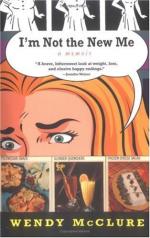The charming face of Marie-Anne-Elizabeth Vigee-Lebrun, who, with the arms of her daughter encircling her, smiles on us here, was undoubtedly not painted in this century, as the painter was born in Paris April 16, 1755, and it is as a young mother that she has represented herself. But as its author lived until March 30, 1842, she should undoubtedly figure among the painters of this century. From early girlhood until old age,
“Lebrun, de la beaute le peintre et le modele.”
as Laharpe sang, was, though largely self-taught, a formidable concurrent to painters of the sterner sex. Married when very young to Lebrun, a dealer in pictures and critic of art, a pure marriage of convention, she left France shortly before the Revolution, and went to Italy. Before her departure she was high in favor at the court, and painted no less than twenty portraits of Marie Antoinette.
[Illustration: BRUTUS CONDEMNING HIS SONS TO DEATH. FROM A PAINTING BY LETHIERE.
Brutus led in overthrowing the tyranny of Tarquin the Proud and establishing a republic in Rome. He was then elected one of the two consuls. His two sons were detected in a conspiracy to restore Tarquin, and he, as consul, himself condemned them to death.]
[Illustration: THE BURIAL OF ATALA. FROM A PAINTING BY GIRODET, IN THE LOUVRE.
Atala, the heroine of a romance by Chateaubriand, was the daughter of a North American Indian chief, passionately in love with the chief of another tribe, with whom she fled into the desert. But having been religiously vowed to virginity by her mother, she remains faithful to the vow, and finally in despair poisons herself.]
[Illustration: MADAME LEBRUN AND HER DAUGHTER. FROM A PAINTING BY MADAME LEBRUN HERSELF.
This picture, painted for a private patron, passed, at the period of the French Revolution, into the possession of the French nation, and is now in the Louvre. There is in the Louvre also another by Madame Lebrun, representing herself and her daughter, one which the artist bequeathed to the Louvre at her death, in 1842. Of the two, while both are charming, the one here printed represents the painter at her best.]
Fortune favored her in Italy, whence she went to Vienna, Prague, Dresden, and Berlin. In each and every capital the same success, due to her talent, beauty, and amiability, followed her; and at last arriving in St. Petersburg, she remained there until 1801, when she returned to Paris. Some time after, she visited England, where she remained three years, and then returned by way of Holland to France in 1809. The Academy of France and the academies of all other European countries admitted her to membership.




